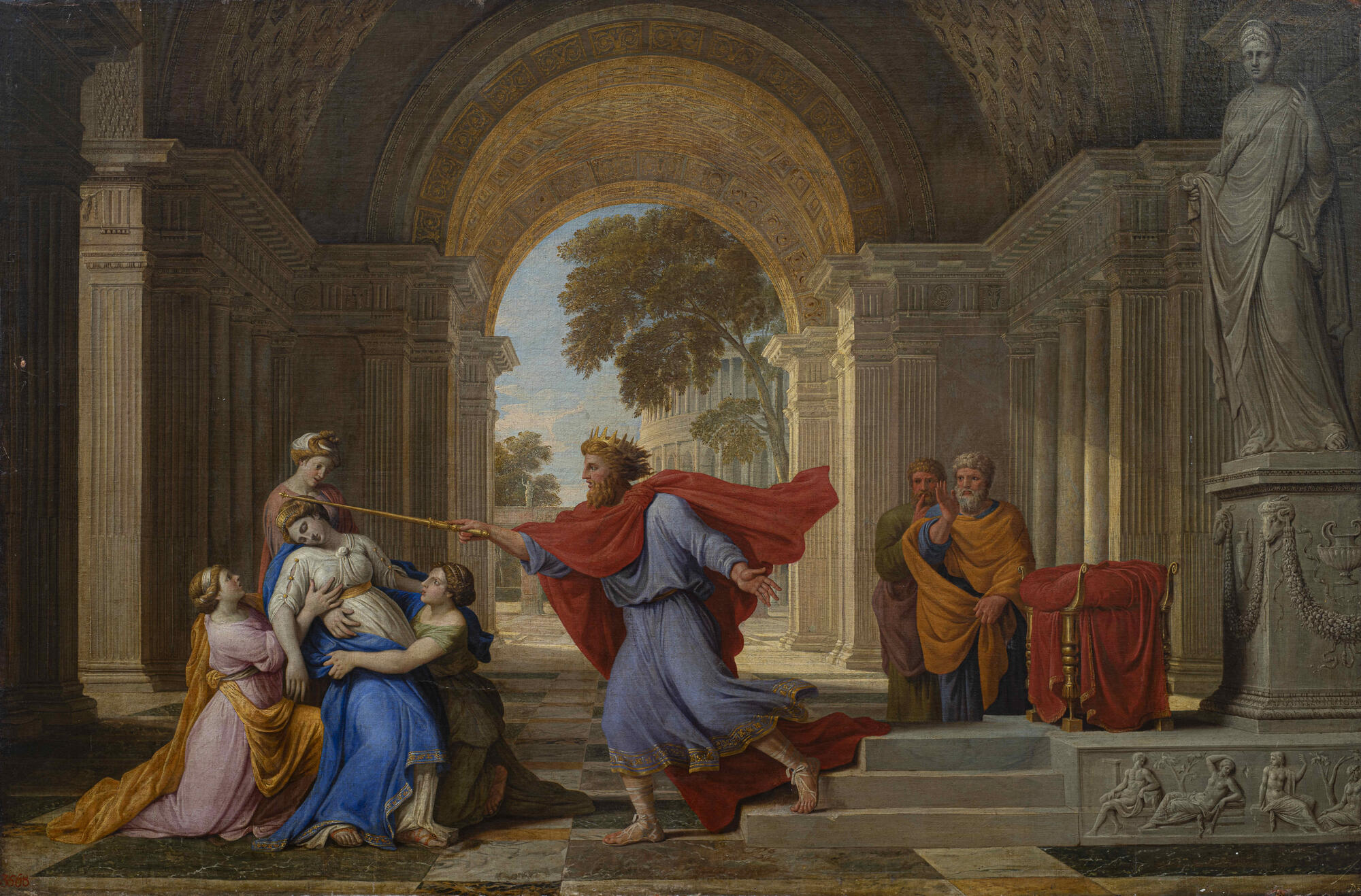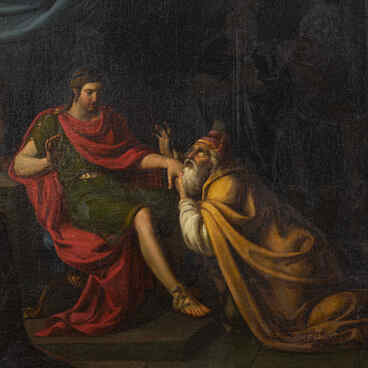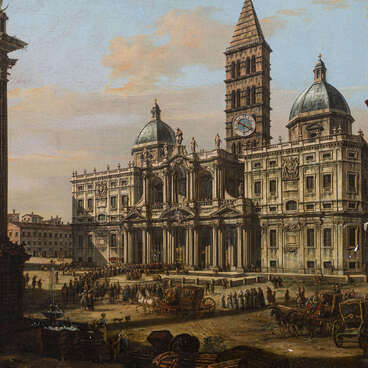The painting “Esther before Ahasuerus” by an unknown artist is one of many versions of the eponymous work by the founder of Classicism, Nicolas Poussin.
Classicism (from the Latin word “classicus” — “exemplary”) was a movement in art that drew on the principles of the ancient civilizations of Greece and Rome. It was characterized by harmony and restraint, elegance, and respect for proportions. This aesthetic and rational style became firmly established in Western culture beginning with the Renaissance. Antique standards of beauty dominated for many centuries. In Classicism, the ideal was based on the canon of proportions: the golden ratio and the proportion of body parts. Anatomical realism, adjusted for perfection, also implied emotional and psychological realism, which attracted the viewer with its dramatic tension and. At the same time, myths and legends about ancient Greek and Roman gods and heroes served as the main inspiration for the stories.
The artists who worked in the classical style adhered to its clear canons: the prevalence of the general over the particular, the line over the color, straight lines over curves, etc. At the same time, the artist was able to introduce into the picture the motifs and meanings he was interested in, so that the classical motifs were infused with the artist’s contemporary themes and ideas.
Classicism took its final form in the 17th-century France in the heyday of absolute monarchy. One of the main representatives of the movement was the Frenchman Poussin, the first painter of King Louis XIII. Poussin’s painting “Esther before Ahasuerus” became a model for a variety of replicas, copies and interpretations.
The plot is based on the biblical story of Esther’s rescue of her people. To expose the intrigues of the servant Oman, who dreamed of exiling the Jews, Esther burst into the throne room of her husband Ahasuerus, ruler of Persia, without permission. She fainted from excitement.
The composition is designed as a theatrical performance in which each character is frozen in the most expressive position: the girl faints, Ahasuerus rushes to her. The figure of the king in his red cloak is the main focus of the viewer’s attention. And Oman the traitor is frozen into the position of informer, bringing his palm to his mouth.
The setting is also reminiscent of a theatrical scene: the main characters act in the foreground, with smaller figures in the background. In the distance, “ideal nature”, which is an indispensable element of classicist paintings, comes into view through the archway: a high sky, a sunny day, lush greenery, architectural ruins. The columns and statue peripheral to the action serve as a backdrop.
Classicism (from the Latin word “classicus” — “exemplary”) was a movement in art that drew on the principles of the ancient civilizations of Greece and Rome. It was characterized by harmony and restraint, elegance, and respect for proportions. This aesthetic and rational style became firmly established in Western culture beginning with the Renaissance. Antique standards of beauty dominated for many centuries. In Classicism, the ideal was based on the canon of proportions: the golden ratio and the proportion of body parts. Anatomical realism, adjusted for perfection, also implied emotional and psychological realism, which attracted the viewer with its dramatic tension and. At the same time, myths and legends about ancient Greek and Roman gods and heroes served as the main inspiration for the stories.
The artists who worked in the classical style adhered to its clear canons: the prevalence of the general over the particular, the line over the color, straight lines over curves, etc. At the same time, the artist was able to introduce into the picture the motifs and meanings he was interested in, so that the classical motifs were infused with the artist’s contemporary themes and ideas.
Classicism took its final form in the 17th-century France in the heyday of absolute monarchy. One of the main representatives of the movement was the Frenchman Poussin, the first painter of King Louis XIII. Poussin’s painting “Esther before Ahasuerus” became a model for a variety of replicas, copies and interpretations.
The plot is based on the biblical story of Esther’s rescue of her people. To expose the intrigues of the servant Oman, who dreamed of exiling the Jews, Esther burst into the throne room of her husband Ahasuerus, ruler of Persia, without permission. She fainted from excitement.
The composition is designed as a theatrical performance in which each character is frozen in the most expressive position: the girl faints, Ahasuerus rushes to her. The figure of the king in his red cloak is the main focus of the viewer’s attention. And Oman the traitor is frozen into the position of informer, bringing his palm to his mouth.
The setting is also reminiscent of a theatrical scene: the main characters act in the foreground, with smaller figures in the background. In the distance, “ideal nature”, which is an indispensable element of classicist paintings, comes into view through the archway: a high sky, a sunny day, lush greenery, architectural ruins. The columns and statue peripheral to the action serve as a backdrop.


